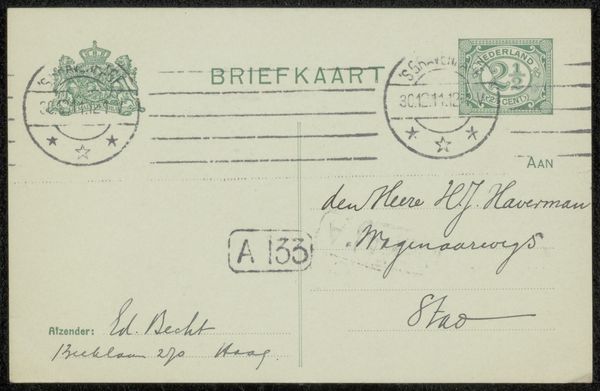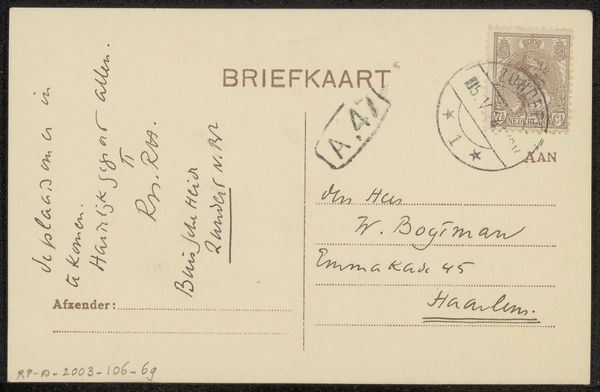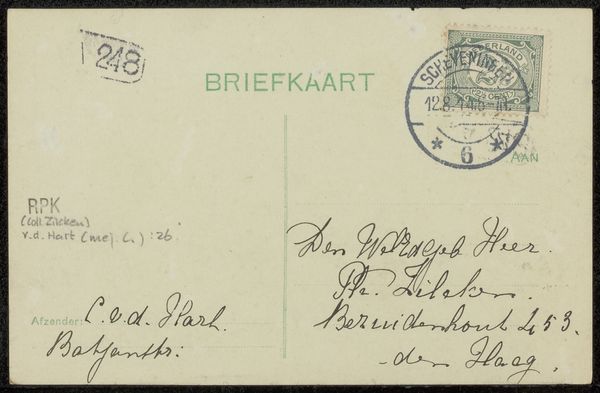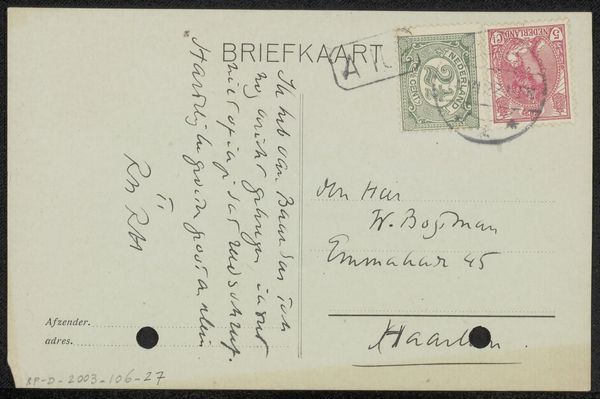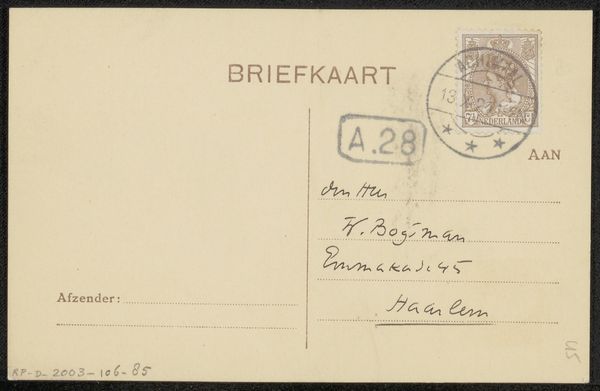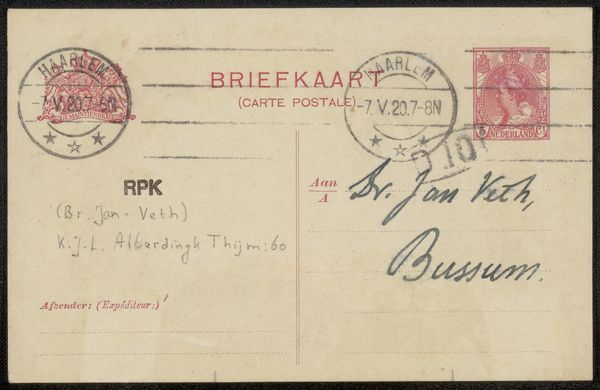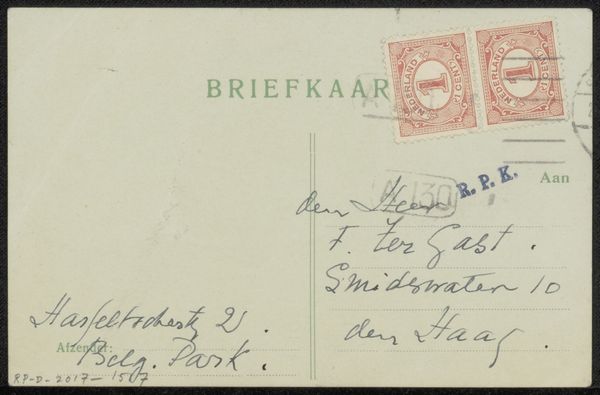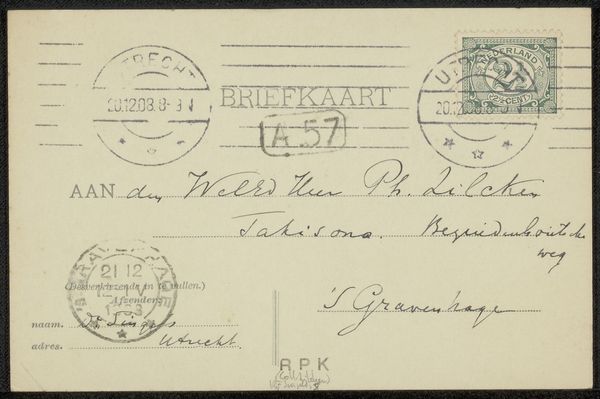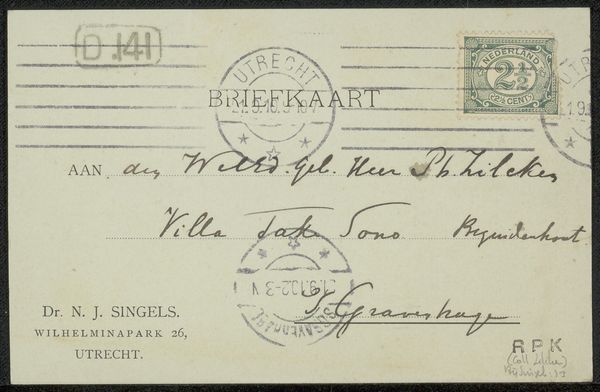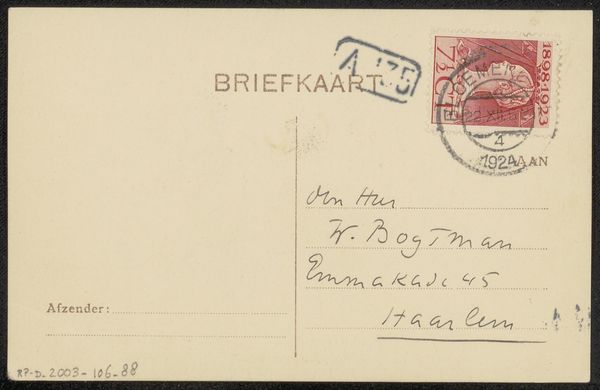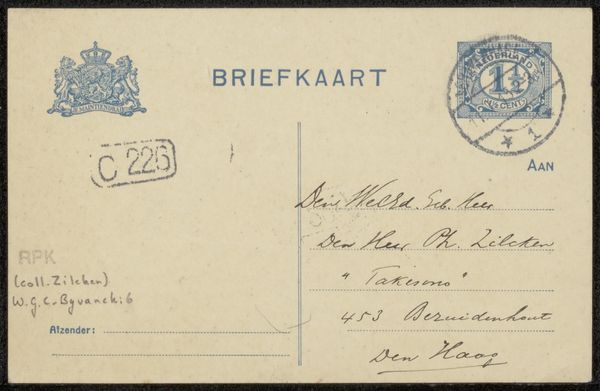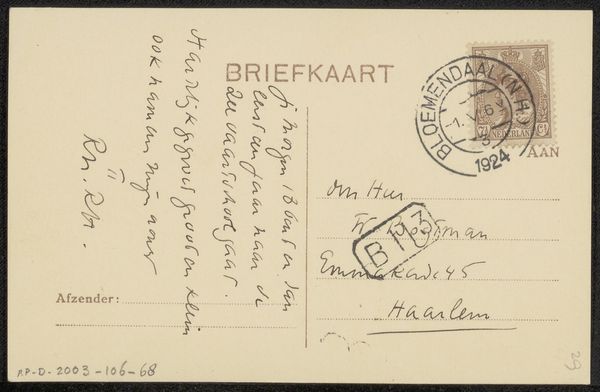
Briefkaart aan Jan Ponstijn en Henriëtte Johanna Petronella van Hilten Possibly 1909 - 1912
0:00
0:00
leogestel
Rijksmuseum
Dimensions: height 90 mm, width 139 mm
Copyright: Rijks Museum: Open Domain
Curator: We're looking at a postcard designed by Leo Gestel, probably between 1909 and 1912. It’s a drawing on paper, currently held in the Rijksmuseum collection. What's your initial take? Editor: It has this wistful, antiquated feeling, like uncovering a message in a bottle. I'm drawn to the fragility of it all, that it’s aged paper covered with fading text. Curator: That aged quality speaks to its historical context, doesn't it? Postcards like these served as a vital means of communication, especially before the digital age. They were little portable slices of everyday life, shaped by the postal services of the time. Notice the stamps and postmarks from Nijmegen. Editor: Definitely. They lend it authenticity, like little embedded time capsules. You know, it reminds me of keeping a sketchbook. It feels so intimate, and this could easily have come from Gestel's sketchbook. Imagine all those fleeting thoughts and little ideas he had at the time, all bundled into sending this personal little note! Curator: Indeed. Its composition invites a closer examination, revealing both casual informality and careful artistry. We can interpret the text and its layout within a broader framework of design aesthetics. The use of the "hand-drawn type" reflects a blend of the functional with an artist's personal flair. Editor: You’re right. There’s something beautiful in how utilitarian and artsy it is. I’m feeling it has emotional resonance with themes of memory, longing, even the simple joy of connecting with friends like Jan Ponstijn and Henriëtte van Hilten who were to receive it. Curator: These postcards give tangible evidence of personal and artistic networks from the period. It makes one consider: how did these networks help to nurture artistic production and reception? Editor: Exactly, it also reminds me of the sheer importance and value of tangible communication and how it feels versus sending an email today! I like how it grounds us back into the human side of art history. Curator: It is a precious window, connecting the mundane aspects of sending mail to the much larger world of artistic movements such as post-impressionism, which informed so many artists' aesthetic practices during this era. Editor: I agree; this small paper holds some huge connections, then and now.
Comments
No comments
Be the first to comment and join the conversation on the ultimate creative platform.
